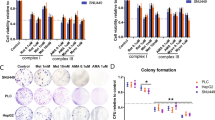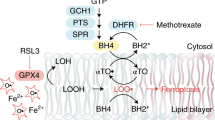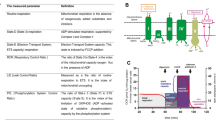Abstract
The cytotoxic properties of quinones, such as menadione, are mediated through one electron reduction to yield semi-quinone radicals which can subsequently enter redox cycles with molecular oxygen leading to the formation of reactive oxygen radicals. In this study the role of reduction and oxidation in the toxicity of mitoxantrone was studied and its toxicity compared with that of adriamycin and menadione. The acute toxicity of mitoxantrone was not mediated through one-electron reduction, since inhibition of the enzymes glutathione reductase and catalase, responsible for protecting the cells against oxidative damage, did not affect its toxicity. Adriamycin was the most potent inhibitor of protein and RNA synthesis of the three quinones. Menadione, at concentrations up to 25 microM, did not inhibit either protein or RNA synthesis unless dicoumarol, an inhibitor of DT-diaphorase, was also present. The two-electron reduction of menadione by DT-diaphorase is therefore a protective mechanism in the cell. This enzyme also protected against the toxicity of high concentrations (100 microM) of mitoxantrone. The inhibitory effect of mitoxantrone, but not of menadione or adriamycin, on cell growth was prevented by inhibiting the activity of cytochrome P450-dependent mixed function oxidase (MFO) system using metyrapone. This suggests that mitoxantrone is oxidised to a toxic intermediate by the MFO system.
This is a preview of subscription content, access via your institution
Access options
Subscribe to this journal
Receive 24 print issues and online access
$259.00 per year
only $10.79 per issue
Buy this article
- Purchase on Springer Link
- Instant access to full article PDF
Prices may be subject to local taxes which are calculated during checkout
Similar content being viewed by others
Author information
Authors and Affiliations
Rights and permissions
About this article
Cite this article
Duthie, S., Grant, M. The role of reductive and oxidative metabolism in the toxicity of mitoxantrone, adriamycin and menadione in human liver derived Hep G2 hepatoma cells. Br J Cancer 60, 566–571 (1989). https://doi.org/10.1038/bjc.1989.314
Issue Date:
DOI: https://doi.org/10.1038/bjc.1989.314
This article is cited by
-
Autophagy (but not metabolism) is a key event in mitoxantrone-induced cytotoxicity in differentiated AC16 cardiac cells
Archives of Toxicology (2023)
-
Mitoxantrone impairs proteasome activity and prompts early energetic and proteomic changes in HL-1 cardiomyocytes at clinically relevant concentrations
Archives of Toxicology (2020)
-
Application of Sustainable Natural Resources in Agriculture: Acaricidal and Enzyme Inhibitory Activities of Naphthoquinones and Their Analogs against Psoroptes cuniculi
Scientific Reports (2018)
-
Short‐chain acyl‐CoA dehydrogenase deficiency: from gene to cell pathology and possible disease mechanisms
Journal of Inherited Metabolic Disease (2017)
-
Pathways of cardiac toxicity: comparison between chemotherapeutic drugs doxorubicin and mitoxantrone
Archives of Toxicology (2016)



